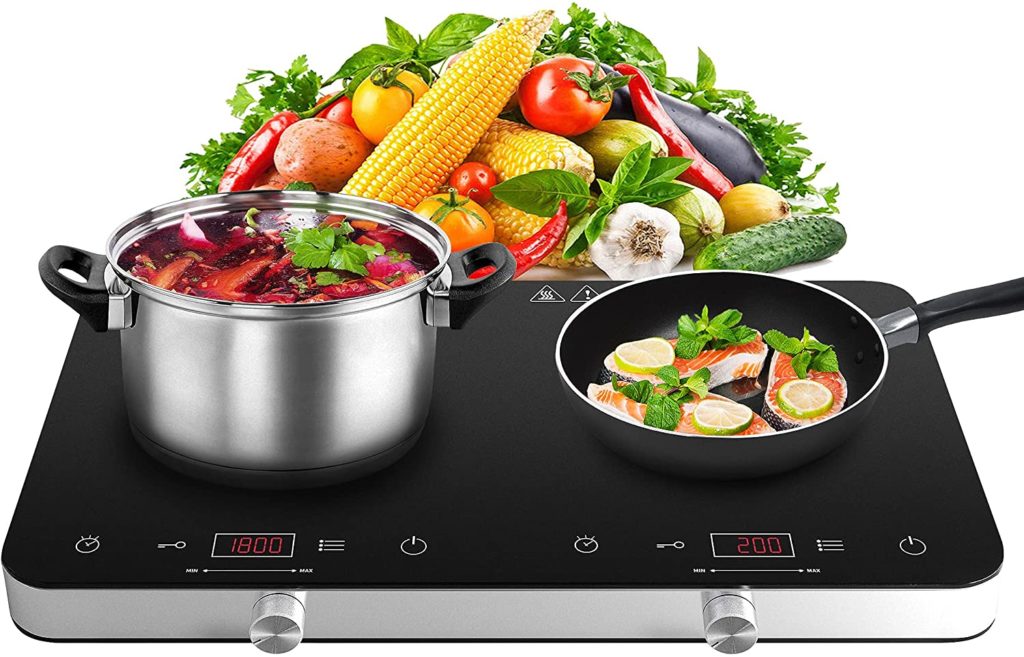Induction cooktops are revolutionary cooking mediums. They help to cook food faster and better. According to reports, the global market for induction hobs was $11.1 billion in 2020.
Are you planning to start cooking on an induction stove, but you have no idea how it works? Here is some information on an induction hob and whether or not an induction is a good choice for your kitchen.
What is induction cooking?
There are three types of heating elements for the kitchen appliances:
- Gas (like traditional stoves)
- Electric (usually in the form of metal coils)
- Induction
Each type of cooking medium heats and cooks your food but in a different way. For example, an induction cooktop provides scrumptious cooking without any dangerous open flames or hot plates.
Induction cooking involves running a current through a coil of copper wire within an induction hob’s base unit. The resulting magnetic field causes the cookware to heat up. Most modern cookware is compatible with this cooking medium because it involves temperature through an electric current and not through heat from gas or electricity.

What utensils can be used with induction?
To use an induction hob, you do need induction-compatible cookware. Most pots and pans are electric stovetop safe but it must have a bottom that is flat. Here are some considerations to keep in mind:
- The surface of your cookware needs to be made of metal. That includes stainless steel, cast iron, copper, or aluminum. If you use cookware with a non-metal, like glass or ceramic, the stove will not detect it, and it will not heat up. If you have a flat stovetop, the ideal pot or pan should be about 3mm to 4mm thick.
- If you buy new cookware, make sure your pots and pans are compatible with induction stovetops. You can use induction pans only on an induction hob. Try not to use them on standard cooktops.
- Larger pans might not heat as intensely as smaller ones, so it is a good idea to keep pots and pans between 10 and 12 inches or less for the best results.
- In some cases, the enamel on your cookware can get scraped if you use extremely high heat. This can damage your food or make your pots and pans nonfunctional.
What are the advantages of using an induction stovetop?
Compared to other types of stoves, induction cooking provides several advantages:
1. You can cook faster
Most induction burners heat up in a few minutes and bring your pot of water or oil to a boil. When you cook something particularly greasy like bacon, the non-stick properties of many induction-compatible pots and pans make cleanup much more effortless.
2. They are safer to use
Induction burners are one of the safest types of cooking surfaces around. Since there are no open flames or hot plates, you do not have to worry about burning yourself if you accidentally brush against a hot surface. Besides, it is safer to touch an induction stovetop when it is turned off.
3. They are energy efficient
The heat coming from the burner only affects the cookware sitting on top, not your entire kitchen or home. It means you save a lot of energy by heating just one pot. Induction is designed to cook food very fast. So, if you compare the cooking time in induction with cooking time on a gas stove, you will notice that food on induction cooks faster.
4. They are easy to clean
Almost all induction stovetops are flat and smooth, so most types of dirt and spills wipe away easily with a damp cloth or paper towel. It makes it easy to keep your stovetop looking pristine.
Induction cooktops are beneficial for every household. They help to reduce the cooking time as well as consumption of energy. If you are able to buy induction friendly cookware, then your experience of cooking on induction will heighten.
You provided an in-depth explanation of the difference between induction cooktop and electric stove. Thank you.